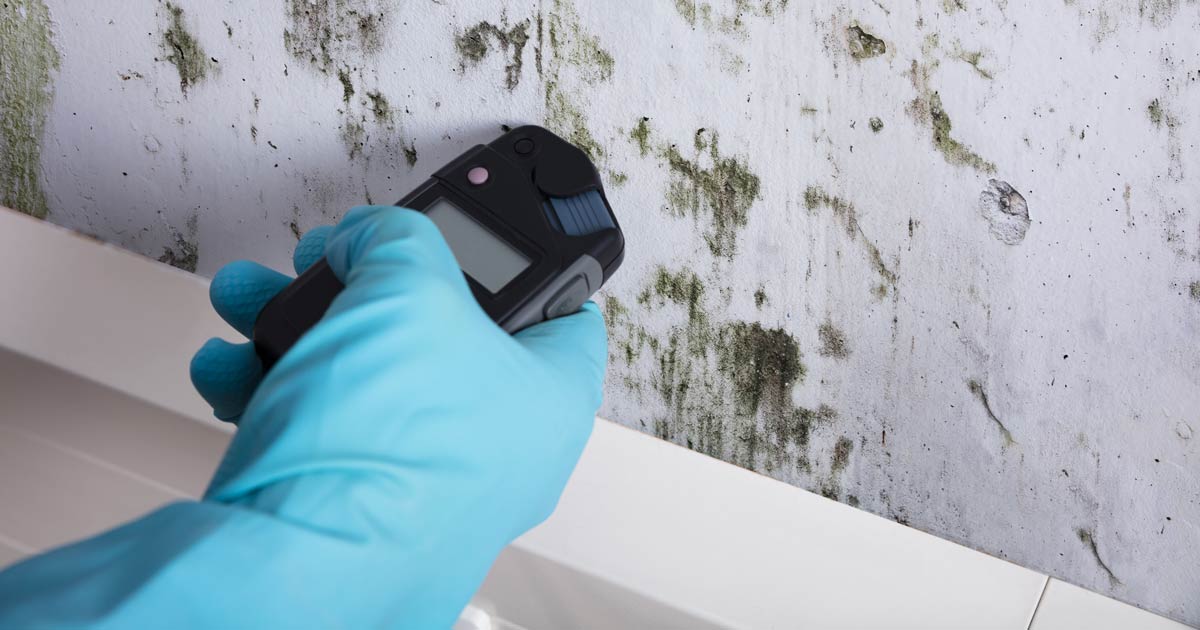Professional Tips for Message Mold And Mildew Removal Success
In the world of mold and mildew removal, efficiently eliminating mold and mildew is just half the fight; the real difficulty exists in avoiding its reappearance. By sticking to professional tips and best practices, individuals can safeguard their rooms versus mold rebirth and preserve a healthy indoor atmosphere.
Display Moisture Levels Regularly
Regular tracking of moisture levels is essential in guaranteeing the effectiveness of message mold and mildew removal efforts. After finishing mold and mildew remediation procedures, preserving ideal humidity degrees is important to stop mold re-growth and make certain a healthy and balanced interior environment. Monitoring moisture levels enables early discovery of any kind of spikes or variations that might potentially result in mold renewal. High humidity degrees above 60% create a favorable atmosphere for mold and mildew to grow, making regular checking a positive measure to avoid any type of future mold problems - Post Remediation Inspection near me.
Furthermore, establishing a regular schedule for moisture checks, particularly in risky locations such as kitchen areas, bathrooms, and cellars, is a proactive technique to mold avoidance. By constantly checking humidity levels, residential property proprietors can effectively mitigate the threat of mold reoccurrence and preserve a healthy interior setting post-remediation.
Conduct Thorough Inspections Post-Remediation
Adhering to the completion of mold and mildew remediation treatments, it is important to conduct thorough evaluations to validate the effectiveness of the remediation procedure. These post-remediation examinations are important in making certain that the mold issue has actually been efficiently attended to and that there is no recurrence or staying mold and mildew growth. Inspections must be performed by qualified specialists who have proficiency in identifying mold and mildew and assessing indoor air top quality.
During these inspections, various techniques such as visual evaluations, air sampling, and surface sampling may be utilized to thoroughly assess the remediated areas. Visual evaluations include a comprehensive assessment of the facilities to look for any type of visible indications of mold growth or water damage. Air tasting helps in figuring out the airborne mold spore levels, while surface sampling can spot mold and mildew particles on surface areas.
Implement Appropriate Ventilation Approaches
After making sure the performance of the mold remediation process through complete evaluations, the following critical step is to focus on executing correct air flow strategies. Appropriate ventilation is essential in avoiding mold reoccurrence by regulating wetness levels and advertising air blood circulation.
Proper air flow not just help in stopping mold and mildew development yet additionally contributes to the total health and convenience of residents. By ensuring appropriate ventilation throughout the property, you can lower the risk of mold and mildew regrowth and develop a much healthier living environment.

Use Mold-Resistant Products for Fixes
To enhance the lasting effectiveness of mold and mildew removal initiatives, including mold-resistant products for repairs is crucial in minimizing the risk of future mold and mildew growth. Mold-resistant products are developed to endure moisture and inhibit mold growth, making them a necessary choice for areas vulnerable to dampness and humidity. When repairing locations impacted by mold, using materials such as mold-resistant drywall, mold-resistant paints, and mold-resistant caulking can aid prevent mold and mildew reappearance.
Mold-resistant drywall is an outstanding alternative to standard drywall in locations like bathrooms and basements where wetness degrees are higher. When exposed to damp conditions, this kind of drywall has an unique finishing that resists mold growth also. Furthermore, utilizing mold-resistant paints consisting of antimicrobial representatives can further prevent mold advancement on walls and ceilings.
In areas where wetness prevails, such as cooking areas and bathrooms, using mold-resistant caulking around tubs, sinks, and windows can help secure out water and protect against mold from holding in cracks and crevices. By spending in these mold-resistant products during repair services post-remediation, you can significantly minimize the probability of future mold problems and maintain a much healthier indoor setting.
Maintain Tidiness and Address Water Issues
After mold remediation, it is critical to this content maintain a clean environment to protect against the regrowth of mold and mildew. Leakages, water breach, or high humidity degrees can produce the best reproduction ground for mold, so it is critical to deal with any type of water-related issues right away.
To preserve sanitation, consider making use of more tips here HEPA filters in vacuum cleaners and air cleansers to trap mold spores and avoid their blood circulation airborne. Guaranteeing correct air flow in areas vulnerable to moisture accumulation, such as restrooms and kitchens, can aid keep humidity degrees in check. By remaining alert regarding cleanliness and attending to water concerns promptly, you can properly protect against mold reinfestation and maintain a healthy indoor environment.
Verdict

In the realm of mold and mildew remediation, efficiently removing mold and mildew is just half the fight; the true challenge lies in preventing its reappearance. After finishing mold removal treatments, preserving optimal moisture levels is vital to protect against mold re-growth and ensure a healthy interior environment. High humidity levels over 60% develop a favorable atmosphere for mold and mildew to thrive, making routine monitoring an aggressive measure to stop any type of future mold problems.
To boost the lasting have a peek at this site performance of mold remediation efforts, including mold-resistant products for repairs is essential in alleviating the risk of future mold development. After mold remediation, it is essential to maintain a clean environment to protect against the regrowth of mold.